My food budget is $375 a month for a family of 6 including three adults and three kids.
This budget includes $200 a month for food, $80 for fruit, and $95 for meat.
Overtime I gradually included non-food items like toilet papers, kids’ clothes, and shoes in the $200 food budget as well.
In December 2017, my husband and I made two- grocery hauls at Walmart where we purchased some staples that could last us many months.
Set up a grocery list
Early in 2017, we set up a grocery list.
We first listed our staples. We listed them in the first column of a table. We went to Walmart, Aldi, Fareway and Sam’s Club to record their prices and compare their cost / unit or oz. Staples that are cheaper to purchase at Walmart are the one we purchased in December. In the table, we listed items by grocery store where we would buy them. In the second column, we listed their unit price. In the third column, we listed the quantity we use a month. In the fourth column, we inserted a formula to calculate the cost. That is our grocery list template. Then next to that table, we set two columns one for quantity and the second one for the cost and inserted a formula in the cost column. In December, we listed the quantity we would buy for each item for the list under Walmart and adjusted the quantity to stay within our budget. Then we continued to add two columns (quantity and cost) every month for the monthly grocery shopping. At the end of this year, It should track how many of each staple we purchased throughout the year compared to how many we have on hand in the pantry. So we would know how many we consumed and how many to purchase for the following year.
Setting up a grocery list helped us decrease impulse purchases when we do shopping, which saves money. Research showed that out of 10 items purchased, customers make 3 impulse buys. One way to know your ratio is to keep items you didn’t plan to buy separate in the cart from items you intended to purchase. Before heading to the checker, count these items and make a second judgement whether or not you need them.
Find more pantry space around the house
I like to emphasize that I don’t have a large pantry. And I didn’t need one to stock up in food. I first started with my pantry. I decluttered it and sent many electric gadgets like blenders, spice grinder,… to a thrift store. Then I moved to other areas of the house and decluttered shelves in closets to free space. I tried to have a spot for each staple item which makes the storing easy. I collected boxes at the grocery stores and put them on the shelves.
I emptied a corner kitchen cabinet to store some staples like tomato puree, spaghetti, and macaroni. I sorted my linen closet and stored bed sheets in two big totes in the basement, and sent some blankets to a thrift store. I kept one shelf for bed sheets and blankets in the linen closet. I freed up two lower shelves for my kid’s school belongings, and freed the top two shelves for pantry staples like four, macaroni, salt, and sugar.
Some staples are stored in the basement on sturdy shelves we purchased to store items like homemade canned jars. Also in the basement, we stored packages of toilet paper, olive oil, coconut oil, baking soda, washing soda, borax, some cereals, and they all have their own specific areas.
My kids’ room closet has a top shelf they can’t reach and don’t use. I stored some of their breakfast cereals, saltines, and crackers there.
Our house was built in the 70’s. It is about 1,000 sq ft. It is just what we need and we love it. I got away from having many materials possessions that are not important to me to have space for what matters without cluttering my house. We don’t need a big house to have a food pantry where we can shop for our cooking. Having a big house means having more stuff. I am glad we didn’t fall in that trap when we were shopping for a house. A house requires a lot to maintain. Although it is an asset, it is a liability on its own. We want the bulk of our asset to be elsewhere and not tied to the house we live in.
Save for a grocery haul and don’t bounce your checking account
In 2018, I started to save from our food budget every month so that in December I should have enough to make the big purchase again. For that reason, when I take money out for food at the start of a month, I would save $100 from the food budget in a separate envelope. The remaining $100 is divided in 3 categories. $30 set aside for milk and bread, $20 for sales, leaving $50 for our staples.
Some food, I only buy them when they are on sale like ice cream, chocolate chips, or avocado. When avocado is on sale like 2 or 3 for $1, I like to purchase some and make avocado salad or sandwich for dinner to replace a menu on my weekly meals list.
I stocked up on green peppers when it’s on sale 3 for $0.99. I would wash them and cut in Juliet or chop them up and freeze for cooking. I would freeze them whole sometimes and cut when needed. They just occupy more space in the freezer. I tried to grow them but they didn’t do well in the garden last year.
I purchase carrots on sale 2 lbs. for $0.99. I would chop some and Juliet some and fill up Ziploc bags and freeze them. I grow them as well in the garden hoping I would not need to buy them in the future once I start to grow enough for my supply.
I purchase celery when it is $0.89 and chop to freeze. I am growing lovage a perennial herb hardy to my zone 5 to use as a substitute in the future and not buying celery again.
I stock up on chocolate chips when they are on sale for $0.99 a bag of 10-12oz and store them for cookies.
Last year I stocked up in shredded cheese when they were on sale for $0.99 a bag of 8 oz. I stored them in the freezer. I usually purchase block of cheese but that sale was a good deal. Because the shredded cheese was finely shredded, I saved more then when I buy a cheese block and grate it myself. My pieces are bigger and I use more.
To be able to stock up when there are sales like above without going over my food budget, It helps to save for the sales ahead of time.
We buy ice cream when on sale and store in the freezer for holidays or birthdays. Grocery stores in my town send us weekly ads. We don’t meal plan for the week based on the ads. I have done that in the past. Now we cook from our pantry and grocery shop at the beginning of the month to replenish our supply.
The remaining $50 are spent on food staples we are low in stock. It could be rice or vinegar from Sam’s Club, or tomato puree, pasta, flour, or olive oil from Walmart or Ziploc bags from Aldi. Sometimes when updating our grocery list for the month, we make adjustments to fit the cost of staples within $50 for the month. Sometimes, I spend even less on staples and save the rest for sales. We are getting close to summer. When sweet corn goes on sale I would stock up on that and freeze for winter after we eat plenty. I would do the same for potatoes. Last year I canned potatoes and am still using it in soup. I have not bought potatoes for months because they have not being on sale recently. I store potatoes in the basements for weeks as well.
We have our grocery list on G drive with price and every month we add the quantity of items we would buy under quantity column on the row of the specific item and the cost column calculates the cost.
My husband and I can access the list on the go. He does the shopping. I do the recording. We access the inventory together and the grocery list.
Last year I stocked up on 9 months’ worth of cereals when they were on sale for $0.99/lb. It was the first time I purchased that many. I remarked that my kids didn’t like some of them. Also some of them reached the expiration date. I have being finding ways to use them before they expire like making chicken balls with my homemade canned chickens and corn cereal, or trailer mix by mixing different cereals, and adding chocolate chips and roasted peanut. I would not be buying that many cereals this year. I remarked that I could serve to the kids a breakfast that doesn’t involve cereal each time. To avoid wasting food, I don’t shop sale for an item in my pantry if I have a lot of them already. I only replenish if the stock is low. For instance, cereals go on sales times to times, but I don’t buy any because we still have a lot in stock.
Our fruit budget is spent on fruit. We shop fruit from the weekly ads if no fruit we eat is on sale for the week, we purchase bananas. We shop fruit weekly unlike our staples. For instance, when apples are on sale like between $0.50 to $0.99/lb., for example, we would purchase like 40 lbs. of apples and store in the fridge. It lasts more than a week while we wait to buy the next fruit on sale. Sometimes, bananas can be $0.39/ lb. We would buy about 30 lbs. of bananas and it would last us like a week. My kids eat fruit especially if that is a fruit they enjoy like bananas. They take fruit to school for snack as well. When they are hungry, the first thing they tend to ask for is fruit. I planted a lot of fruit trees on our property hoping they would supply us enough fruit once they start producing.
Few days ago, my husband purchased 10 medium watermelons at $2.69 each. They were originally sold for $6.00 each. It is end of May and very hot already. It is the perfect time to stay hydrated. Watermelon just does that. I cut one a day to provide us the fruit for the day. We just saved money right there.
We save meat budget in a separate envelope, until we buy eggs or meat. When meat is on sale we stock up enough to last us for months. We consume a lot of meat and I like to buy meat when they are on sale to save money. Sometimes, we buy from family that raises their own animals. I then can them to free up my freezers space for vegetables and some meat cuts that I prefer not to can like steaks, hams, and bacons.
In this weekly ad, there is a grocery store I don’t shop at often because the items are pricier, that has chicken leg quarters 10 lbs bag on sale for $0.39/lb. That is $3.90 per bag. It is a three day sale that would last from last day of May to the second day of June. I would buy at least 10 bags and store them in the freezer. When I have time I could can some. I don’t purchase boneless chicken cause they are pricier. I can cut the chicken into strips and freeze if I want. But I usually cook chicken with bones in and save the bones for broth later.
By saving a little every month from the food budget, we could stock up in food without bouncing our checking account.
Our food budget of $375 a month include our lunch to work and my daughter school lunch as well.
Her school lunch cost about $500 in 2016-2017 school year. This school year that is a saving of $500 because she is taking lunch and snack to school.
My husband and I take $100 a month each for allowances to cover our lunch at work. That is about $5 a day. It is not much but it can add up. By taking food to work my husband and I decided to save our allowances for our personal expenses like clothes, shoes, electronics…which would have been covered by our checking account otherwise. We even save some of it to invest in stocks. Taking food to work saved us $200 a month or $2,400 a year. Our second daughter is required to pay for snack at school but after this year she would be taking lunch and snack to school like her older sister and it would save us another $500 a year on school lunch. About $2,900 would be saved this year for 3 people taking food to work and school, and it would increase to $3,400 for 4 people next year.
We saved that much but we have not increased the food budget to accommodate the lunches and snacks we take to work and school. Further, I gradually included non-food items into our food budget to see if it was doable. Toilet paper and kids clothing were not originally included but now are.
This helped me shop less for the kids especially after I decluttered their room and downsized their wardrobe.
Grocery budget is not a fixed cost. You can spend way more than you could afford if you don’t get strategically and set a maximum not to go over. It takes practice to get it to what is comfortable for your family. But once you get there, your grocery shopping should not put a dent in your checking account any longer.
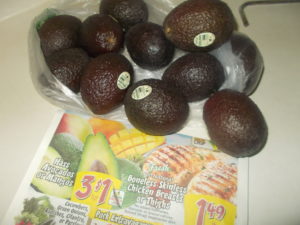
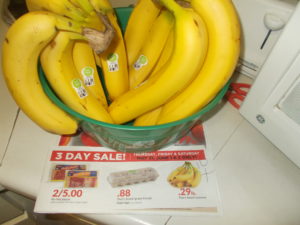
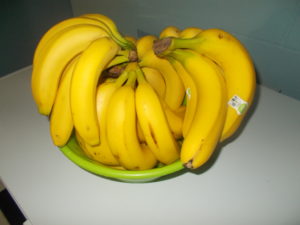
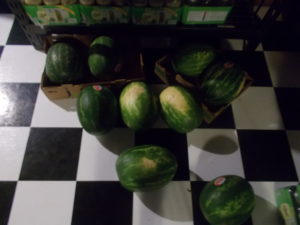
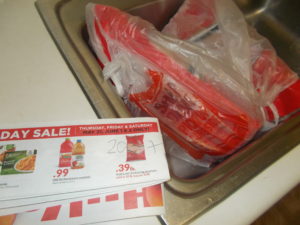
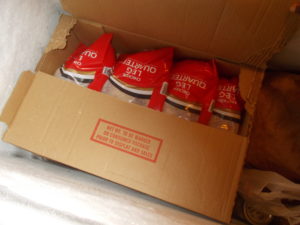

Leave a Comment